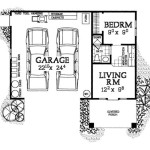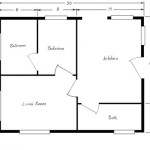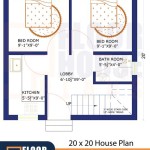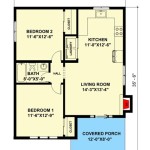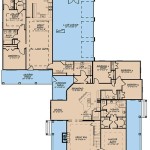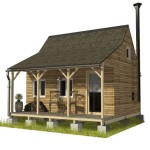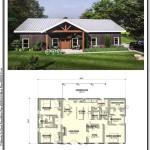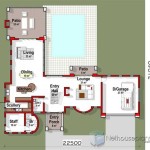Home Plans Below 1000 Sq Feet: Maximizing Space and Efficiency
The increasing demand for affordable and sustainable housing has led to a surge in the popularity of home plans below 1000 square feet. These compact dwellings offer a practical solution for individuals, couples, and small families seeking efficient living spaces without sacrificing comfort or style. Designing and constructing a home of this size requires careful planning and consideration of various factors to ensure optimal utilization of every square inch.
The appeal of smaller homes extends beyond cost-effectiveness. Reduced environmental impact, lower maintenance requirements, and increased opportunities for community living are all contributing factors. By minimizing square footage, homeowners can significantly decrease their carbon footprint through reduced energy consumption for heating, cooling, and lighting. Furthermore, smaller homes often require less upkeep, freeing up valuable time and resources for other pursuits. The rise of the "tiny house" movement has further fueled the interest in minimalist living and the potential for increased financial freedom that small-scale homeownership provides.
This article will explore key considerations in planning and designing homes below 1000 square feet, focusing on essential elements such as spatial layout, storage solutions, material selection, and considerations for maximizing natural light and ventilation. Understanding these principles is crucial for creating a functional, comfortable, and aesthetically pleasing living environment within a limited footprint.
Prioritizing Spatial Layout and Functionality
The spatial layout within a home under 1000 square feet is paramount to its overall functionality and livability. Careful consideration must be given to the arrangement of rooms and the flow of movement throughout the space. Open-concept designs are frequently employed to create a sense of spaciousness and maximize natural light penetration. By minimizing interior walls, the living, dining, and kitchen areas can seamlessly blend together, fostering a more communal and airy atmosphere.
When planning the layout, it's crucial to define distinct zones for different activities. This can be achieved through strategic furniture placement, variations in flooring materials, or the use of partial walls or screens to create visual separation without completely closing off the space. For example, a kitchen island can serve as a functional workspace while also delineating the kitchen area from the living room. Similarly, a strategically placed bookshelf can create a cozy reading nook in the living room.
Multi-functional spaces are essential in small-scale homes. A guest room can double as a home office, a dining table can be used for both eating and working, and a living room can be transformed into a yoga studio. Selecting furniture that serves multiple purposes, such as a sofa bed or a storage ottoman, is crucial for maximizing space and minimizing clutter. Folding or collapsible furniture can also be utilized to adapt the space to different needs.
The placement of essential amenities, such as the bathroom and kitchen, requires careful consideration. Compact bathroom fixtures, such as wall-mounted toilets and corner sinks, can save valuable space. In the kitchen, utilizing vertical space with tall cabinets and shelving can maximize storage capacity. Efficient appliances, such as a combination microwave-convection oven or a narrow dishwasher, can also help to conserve space. Proper ventilation in both the bathroom and kitchen is crucial to prevent moisture buildup and ensure air quality.
Optimizing Storage Solutions for Compact Living
Storage is a critical element in any home, but it becomes even more crucial in a small-scale dwelling. Effective storage solutions are essential for maintaining a clutter-free environment and maximizing the functionality of the space. Integrating storage into the design of the home from the outset is a more effective approach than attempting to add storage after the fact. Every available space should be assessed for its potential storage capacity, including under-stair areas, attic spaces, and wall cavities.
Built-in storage solutions are particularly valuable in small homes. Custom-designed cabinets, shelves, and drawers can be tailored to fit specific needs and maximize the use of available space. For example, built-in shelving can be integrated into the walls of the living room to provide display space and storage for books and other belongings. Similarly, built-in benches with storage underneath can be incorporated into the dining area or entryway.
Vertical storage solutions are particularly effective in small spaces. Tall cabinets, open shelving, and wall-mounted racks can utilize vertical space to maximize storage capacity without taking up valuable floor space. In the kitchen, hanging pots and pans from a ceiling rack or installing a magnetic knife strip can free up counter space. In the bathroom, installing shelves above the toilet or utilizing a vertical shower caddy can provide additional storage for toiletries.
Utilizing under-bed storage containers, storage ottomans, and other multi-functional furniture pieces can also significantly increase storage capacity. Clear storage containers can help to organize belongings and make it easier to find items. Regularly decluttering and minimizing possessions is also essential for maintaining a clutter-free environment in a small home.
Consider the use of hidden storage solutions. For example, a platform bed can incorporate drawers or compartments beneath the mattress, providing ample storage for clothing, linens, or other items. A hollow ottoman can provide storage for blankets, pillows, or games. Utilizing these types of hidden storage solutions can help to maximize space and minimize clutter.
Strategic Material Selection and Design Elements
The selection of materials and design elements plays a significant role in creating a comfortable and aesthetically pleasing living environment in a home under 1000 square feet. Choosing materials that are durable, low-maintenance, and visually appealing can enhance the functionality and value of the home.
Light and neutral colors are generally preferred for walls and flooring in small spaces. Light colors reflect more light, creating a sense of spaciousness and airiness. Using a consistent color palette throughout the home can also help to create a sense of continuity and flow. Accents of color can be incorporated through furniture, accessories, and artwork to add personality and visual interest.
Mirrors can be strategically placed to reflect light and create the illusion of more space. A large mirror in the living room or entryway can visually expand the room and make it feel larger. Mirrors can also be used in bathrooms to brighten the space and enhance functionality.
Large windows and skylights can maximize natural light penetration, making the home feel brighter and more welcoming. Natural light can also help to reduce energy consumption by minimizing the need for artificial lighting. Consider the orientation of the home to maximize sunlight exposure during the day. Operable windows and doors can provide natural ventilation, reducing the need for air conditioning and improving indoor air quality.
Durable and low-maintenance flooring materials, such as hardwood, laminate, or tile, are ideal for small homes. These materials are easy to clean and can withstand heavy foot traffic. Consider using area rugs to define different zones within the open-concept layout and add warmth and texture to the space.
Efficient lighting fixtures, such as LED recessed lighting and pendant lights, can provide ample illumination while conserving energy. Dimmable lights can allow for adjustable lighting levels to suit different activities and moods. Consider using task lighting in the kitchen and reading areas to provide focused illumination where it is needed most.
Pay attention to the scale of furniture and accessories. Overly large furniture can overwhelm a small space and make it feel cramped. Choose furniture that is appropriately sized for the room and avoid cluttering the space with unnecessary items. Minimalist decor is often preferred in small homes to maintain a clean and uncluttered aesthetic.
Integrating outdoor living spaces, such as a patio or deck, can extend the usable living area and create a connection with nature. Even a small balcony or porch can provide a valuable outdoor retreat. Consider adding landscaping and greenery to enhance the curb appeal and create a more inviting atmosphere.
Careful planning and attention to detail are essential for creating a functional, comfortable, and aesthetically pleasing home under 1000 square feet. By prioritizing spatial layout, optimizing storage solutions, and selecting appropriate materials and design elements, homeowners can create a living space that meets their needs and reflects their personal style. The rise in popularity of small-scale homes reflects a growing trend towards more sustainable and affordable living, and with thoughtful design, these compact dwellings can offer a fulfilling and enjoyable lifestyle.

7 Ideal Small House Floor Plans Under 1 000 Square Feet

10 Modern Under 1000 Square Feet House Plans Craft Mart

Our Top 1 000 Sq Ft House Plans Houseplans Blog Com

Our Top 1 000 Sq Ft House Plans Houseplans Blog Com
Small Country Ranch Plan 2 Bedrm Bath 1000 Sq Ft 141 1230
House Plan Of The Week 2 Beds Baths Under 1 000 Square Feet Builder

10 Modern Under 1000 Square Feet House Plans Craft Mart

59 9 Imr House Plan Under 1000 Sq Foot 2 Bedroom Home Blueprints Concept Plans For

10 Modern Under 1000 Square Feet House Plans Craft Mart

Kerala Style Five Low Budget Three Bedroom House Plans Under 1000 Sq Ft Small Hub

